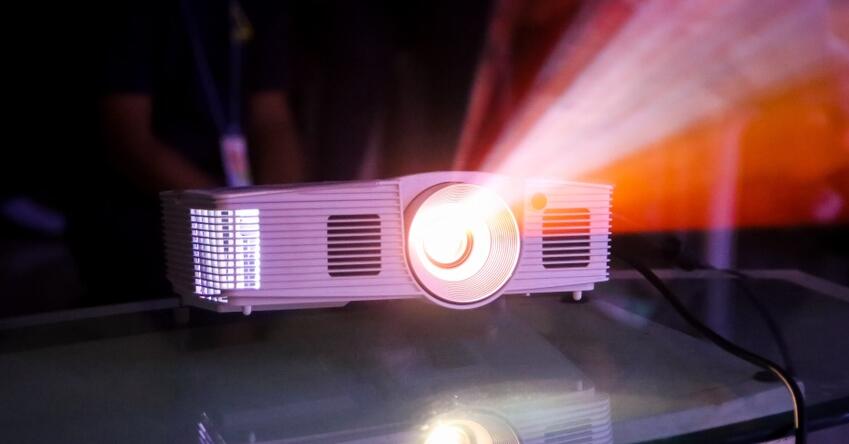Projectors have become an increasingly popular device in recent years due to their ability to display high-quality images and videos on large screens. These devices have evolved significantly over time, with new advancements in technology continually improving their performance and features. This article will discuss projectors, including their history, types, and uses, as well as their benefits and drawbacks.
History of Projectors
The history of projectors dates back to the early 1900s when film projectors were first developed for use in theaters. These early devices used a light source to project a film onto a screen, allowing audiences to view movies and other forms of entertainment. Over time, projectors became smaller and more portable, making them suitable for use in a wide range of settings, including classrooms, boardrooms, and homes.
Types of Projectors
Today, there are several types of projectors available on the market, including:
- DLP Projectors: These projectors use Digital Light Processing technology to produce high-quality images. They are known for their sharp and vibrant images and their ability to display fast-moving action with minimal lag.
- LCD Projectors: LCD projectors use Liquid Crystal Display technology to produce images. They are popular due to their high brightness levels and vivid colors.
- LED Projectors: LED projectors use Light Emitting Diodes to produce images. They are known for their long lifespan and energy efficiency.
- Laser Projectors: Laser projectors use laser technology to produce images. They are popular due to their ability to produce high-quality images with minimal maintenance required.
Uses of Projectors
Projectors are used in a wide range of settings, including:
- Education: Projectors are commonly used in classrooms to display educational materials, such as videos, images, and presentations.
- Business: Projectors are used in boardrooms and meeting rooms to display presentations and other forms of business-related content.
- Home Theater: Projectors are popular among movie enthusiasts who want to create a cinematic experience in their homes.
- Entertainment: Projectors are used in various entertainment venues, such as concert halls and theaters, to display visual content during performances.
Benefits of Projectors
- Large Screen Size(120 inch screen): One of the primary benefits of projectors is their ability to display large images on a screen, making them ideal for use in settings where a large display is necessary.
- Portability: Many projectors are lightweight and portable, making them easy to transport between locations.
- Flexibility: Projectors can be used with a wide range of devices, including laptops, smartphones, and tablets, providing users with a high degree of flexibility in terms of how they use the device.
- Cost-effective: Projectors can be a cost-effective alternative to purchasing a large television or display screen, making them an attractive option for many businesses and individuals.
Drawbacks of Projectors
- Limited Brightness: One of the main drawbacks of projectors is that they can struggle to produce bright images in well-lit environments.
- Maintenance: Projectors require regular maintenance, such as bulb replacements, to ensure that they continue to function correctly.
- Image Quality: The image quality produced by projectors can be impacted by factors such as ambient light, screen size, and resolution.
- Setup: Projectors can be more challenging to set up than other display devices, and may require additional equipment, such as a screen or mounting brackets.
Conclusion
 Projectors are a versatile and flexible device that can be used in a wide range of settings. They have come a long way since their early days in movie theaters, with advancements in technology continually improving their performance and features. While projectors have several benefits, including large screen size and portability, they also have several drawbacks, such as limited brightness and the need for regular maintenance. Despite these drawbacks, projectors remain a popular option for many businesses and individuals due to their cost-effectiveness and flexibility.
Projectors are a versatile and flexible device that can be used in a wide range of settings. They have come a long way since their early days in movie theaters, with advancements in technology continually improving their performance and features. While projectors have several benefits, including large screen size and portability, they also have several drawbacks, such as limited brightness and the need for regular maintenance. Despite these drawbacks, projectors remain a popular option for many businesses and individuals due to their cost-effectiveness and flexibility.
When choosing a projector, it is essential to consider factors such as brightness, resolution, and connectivity options to ensure that the device meets your specific needs. It is also essential to choose a reliable brand with a good track record of producing high-quality projectors.
In conclusion, projectors have become an essential device for many businesses, schools, and individuals. They offer a cost-effective way to display large images and videos on a screen, making them a versatile and flexible alternative to traditional display devices. While they do have some drawbacks, projectors continue to evolve and improve, offering users new and exciting features that make them an attractive option for many different applications.

 Projectors are a versatile and flexible device that can be used in a wide range of settings. They have come a long way since their early days in movie theaters, with advancements in technology continually improving their performance and features. While projectors have several benefits, including large screen size and portability, they also have several drawbacks, such as limited brightness and the need for regular maintenance. Despite these drawbacks, projectors remain a popular option for many businesses and individuals due to their cost-effectiveness and flexibility.
Projectors are a versatile and flexible device that can be used in a wide range of settings. They have come a long way since their early days in movie theaters, with advancements in technology continually improving their performance and features. While projectors have several benefits, including large screen size and portability, they also have several drawbacks, such as limited brightness and the need for regular maintenance. Despite these drawbacks, projectors remain a popular option for many businesses and individuals due to their cost-effectiveness and flexibility.